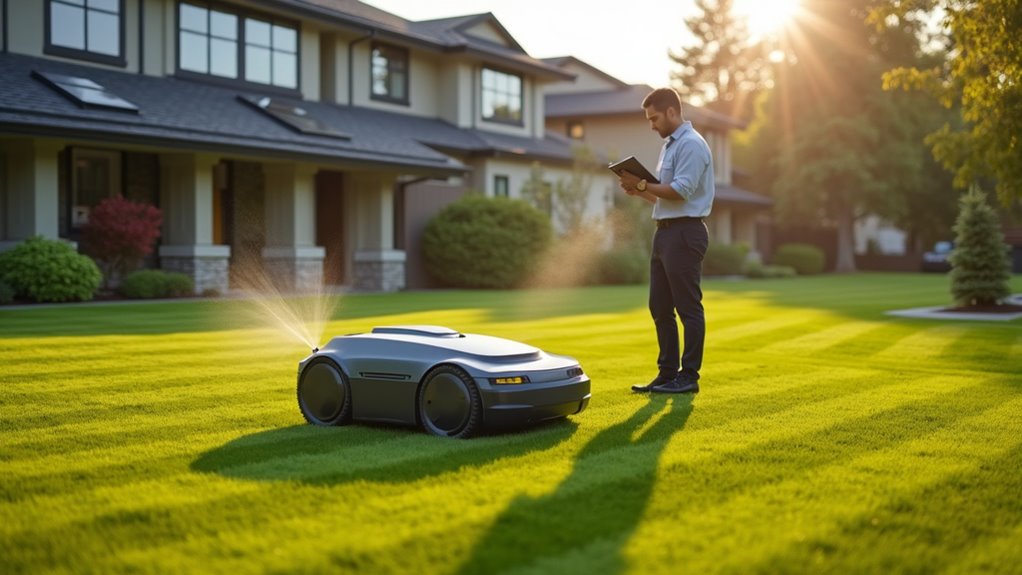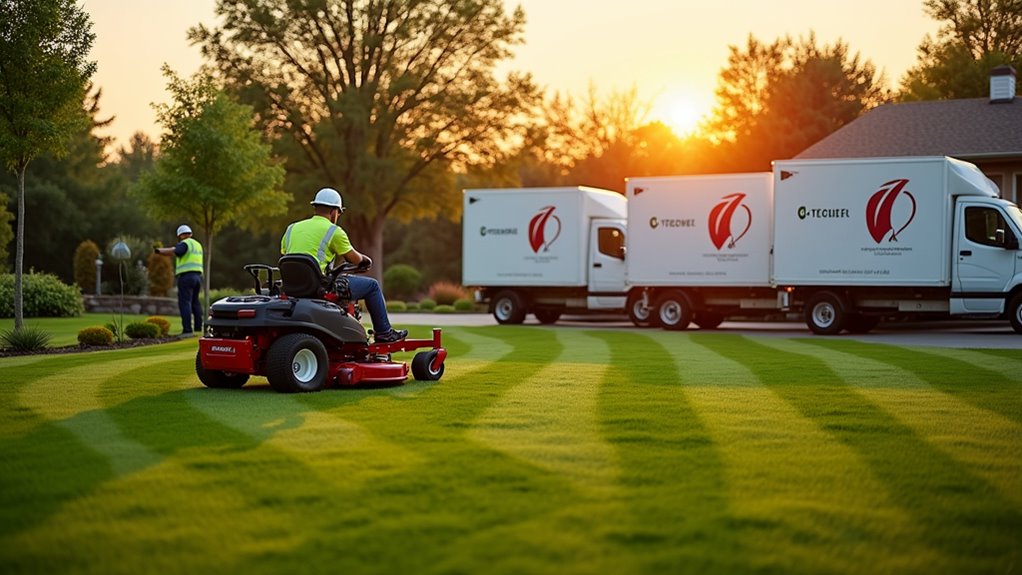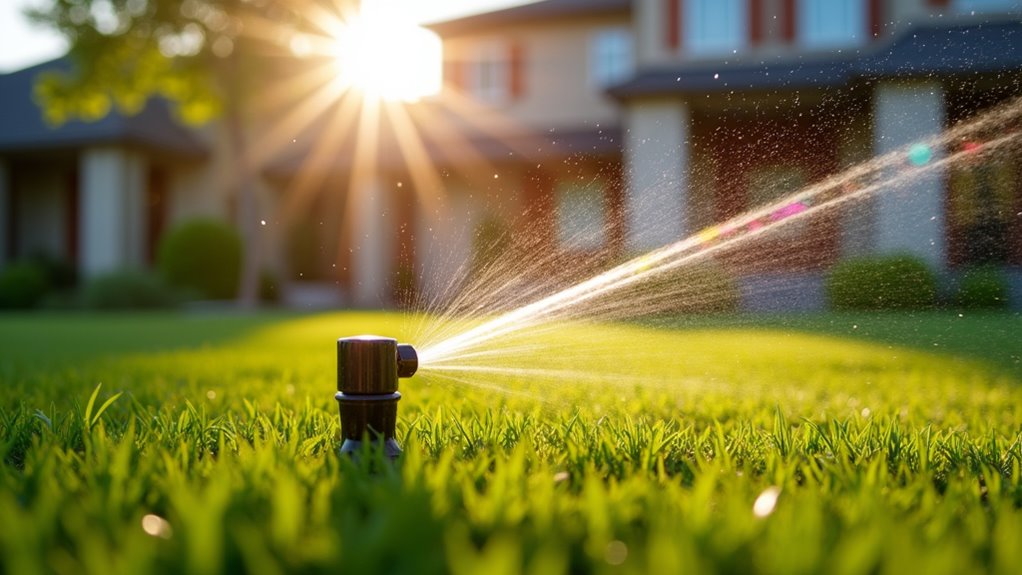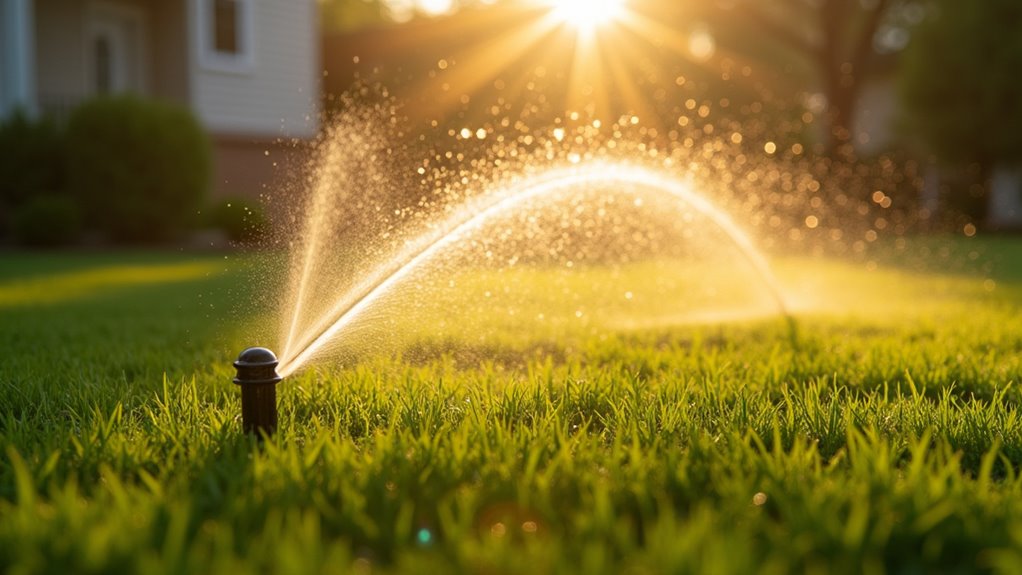Professional lawn mowing services in 2025 combine advanced technology with traditional expertise. You’ll find companies using GPS-enabled fleet management, robotic equipment, and cloud-based systems to deliver precision results. The $78.3 billion industry maintains a 3.2% growth rate, offering tiered service packages from basic mowing to premium landscaping solutions. When selecting a provider, you’ll need to ponder their equipment quality, pricing structure, and eco-friendly practices. The evolving scenery of professional lawn care presents opportunities to optimize your property’s potential.
The Current State of Professional Lawn Services in 2025

As the professional lawn care industry continues its thriving expansion through 2025, the market has evolved dramatically to meet changing consumer demands and technological capabilities. The $78.3 billion lawn care business terrain now emphasizes sustainable practices and technological integration, with residential services dominating 60% of the market.
You’ll find today’s lawn mowing business operations leveraging cloud-based systems and robotic equipment to optimize pricing and service delivery. Starting a lawn care venture requires adapting to these tech-driven changes while implementing effective marketing strategies through professional websites. Despite being seasonal work, the industry’s 3.2% growth rate reflects strong demand, particularly following COVID-19’s impact on homeowner priorities. Modern lawn care services now balance traditional mowing with environmentally-conscious practices, meeting both residential and commercial clients’ evolving expectations.
Essential Equipment and Technology for Modern Lawn Care
Three core equipment categories form the foundation of a modern lawn care operation: machinery, vehicles, and digital tools. Your primary investment should focus on a commercial-grade lawn mower, which anchors your service capabilities and typically requires an $8,000 investment. Complement this with essential power tools including trimmers, edgers, and blowers, ranging from $200-$500 each for professional-grade equipment.
A reliable work vehicle, starting at $5,000, serves as your mobile headquarters and guarantees efficient equipment transport between jobs. On the technology front, you’ll need GPS-enabled fleet management software to optimize your routes and scheduling, while mobile payment processing systems let you accept multiple payment methods on-site. Regular equipment maintenance of all these components ensures continuous performance and longevity of your investment.
Pricing Strategies and Service Package Development

While developing your lawn care business model, establishing strategic pricing structures and service packages forms a critical foundation for long-term profitability. Your pricing works best when calculated using a detailed formula that factors in labor costs, equipment depreciation, overhead expenses, and target profit margins.
Structure your lawn care business offerings into tiered packages, from basic mowing services to premium maintenance plans. Consider multiple pricing models: per square foot for larger properties, per job for one-time services, or per month for recurring contracts. You’ll need to analyze your target market to determine which core services to include in each tier.
Maintain competitive rates while ensuring sustainable profit margins through regular market analysis and cost assessments. Document your pricing strategy clearly in your business plan, allowing for periodic adjustments based on operational costs and market demands.
Building a Competitive Edge in Your Local Market
Strategic pricing sets the foundation, but establishing a distinctive market presence requires targeted differentiation strategies. You’ll need to offer specialized services like aeration and organic treatments that set you apart from standard lawn care providers.
Focus your marketing efforts on building a strong local reputation through online marketing and positive reviews. Your exceptional customer service and quick responsiveness will generate valuable referrals, creating a sustainable growth cycle. Stay ahead by monitoring industry trends and adapting your service offerings to match evolving customer preferences.
Invest in eco-friendly equipment to position yourself as an environmentally conscious service provider. This approach also appeals to environmentally aware clients and demonstrates your commitment to sustainable practices, giving you a competitive advantage in today’s increasingly green-conscious market.
Scaling Your Lawn Care Operations for Growth

Successfully scaling your lawn care business requires implementing sturdy operational systems and technology-driven solutions. Start by investing in fleet management software to streamline your routing and dispatching processes, enabling your teams to service more clients efficiently.
Diversify your revenue streams by expanding into complementary services like landscaping, snow removal, and pest control. You’ll increase profitability by offering extensive solutions to existing clients. Deploy business management platforms to automate administrative tasks, from invoicing to customer communications.
Consider franchising or licensing your proven business model to expand into new markets systematically. Utilize data analytics to identify high-value customer segments and measure performance metrics. This data-driven approach helps you make informed decisions about resource allocation, pricing strategies, and service offerings, ensuring sustainable growth while maintaining service quality.
Frequently Asked Questions
What Do Most People Charge to Mow a Lawn?
You’ll find that pricing factors for lawn mowing typically range from $25 to $75 per visit. For an average lawn size of a quarter-acre, you’re looking at $35-$50 per mow. Your specific rate will depend on several variables, including your mowing frequency, whether you want mulching vs. bagging, and if you need seasonal lawn care services. Professional services often charge more for challenging terrain, while establishing lawn mowing schedules with regular visits can reduce costs.
What Is the 1 3 Rule for Mowing?
The 1/3 rule is a fundamental lawn mowing technique that guarantees you’ll never cut more than one-third of your grass height in a single mowing session. You’ll need to make proper cutting height adjustments based on your grass species considerations and seasonal mowing patterns. For ideal mowing frequency, assess your lawn’s condition regularly and maintain sharp blades. If your grass is 3 inches tall, don’t cut it shorter than 2 inches to protect the lawn’s health.
How Much Money Should You Ask Someone When You Mow Their Lawn per Hour?
You’ll typically want to charge between $50-75 per hour for residential lawn mowing rates, considering your professional lawn care equipment costs and seasonal lawn maintenance demands. Your pricing should factor in lawn mowing frequency, service agreements, and scheduling logistics. For commercial lawn mowing pricing, you can increase rates by 25-50%. Don’t forget to include safety protocols and quality control measures in your service calculations when setting your final hourly rate.
What Is the Most Common Mistake Seen When Treating Lawns?
You’ll find that improper mowing technique is consistently the most common mistake in lawn care. This includes failing to adjust mowing height seasonally and using poor mowing patterns that create ruts or scalp the grass. While excessive chemical application and overwatering issues are significant concerns, nothing damages lawns more frequently than incorrect mowing practices. A close second is neglecting soil testing, which leads to improper fertilizer selection and weakened turf health.



